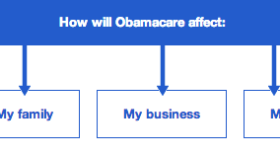Second Opinion is a weekly Q-and-A series that answers questions from San Diegans on the Affordable Care Act. Ask yours here.
The Question: How does the Affordable Care Act deal with end-of-life planning and care?
Sally Johnson's Mira Mesa home is decorated with paintings of the oak trees that surrounded her previous home in Northern California. In 1990, she and a good friend, Sam, left for San Diego.
During their first weeks among the palm trees, Sam was diagnosed with Parkinson's disease. He moved in with Johnson permanently. Over time, handrails joined the paintings on her walls.
Because of her role as Sam's caregiver, Johnson has spent a great deal of time thinking about how the U.S. health system handles care for people with late-stage illnesses. Her thoughts are further influenced by her British upbringing.
"In England, we have a much more open conversation about what happens to people throughout their lives and illness and cancer and things like that," Johnson said. "People are better prepared than most Americans, as far as I can tell, for most end-of-life challenges."
Johnson said there aren't enough dinner-table conversations in the United States about what to do when family members and friends grow old or ill. The toll is both emotional and financial.
In 2009, 5 percent of patients – the elderly and those in critical care for chronic illnesses – accounted for half of the nation's spending on medical care, according to the U.S. Department of Health and Human Services. Family members are often late in leveling their expectations. There's little training for doctors to help them do so. Spending on costly life-sustaining procedures continues.
Johnson said she hopes health reform stirs a national conversation about how to do better when it comes to caring for people who are dying. Here's her question:
I'm interested to know how the Affordable Care Act handles end-of-life situations and [treatment for] expensive chronic illnesses like dialysis and heart transplants for people over 50.
The Takeaway: Advance directives are mentioned – though, not explicitly encouraged – and there's some help to keep the dying at home.
Obamacare did stir a substantive conversation about end-of-life care, but it didn't make it past 2009, let alone into the final health reform law. As Congress worked on drafting the Affordable Care Act, discussions about how to deal with the dying were filed under the politicized heading "death panels."
President Obama had wanted end-of-life counseling to stand as a separate, billable service, giving families and doctors a clear route to make decisions about when to forgo treatment. The idea was scrapped because of concern the benefit might pressure families and incentivize doctors to pull the plug.
But there is language in the final law that moves the discussion forward a bit. The Affordable Care Act's Medicare regulation says "voluntary advance care planning" can be included in covered annual wellness appointments. The planning would involve creating an advance directive, a legal document that dictates how aggressively a patient can be treated once he or she loses the ability to make decisions.
The law also says all insurers must cover hospice, or palliative care for people within six months of dying.
In terms of strengthening in-home services, the law provides some resources:
- It establishes an insurance policy working adults can purchase to help pay for future long-term disability care. It would pay out at least $18,250 a year that could go toward any in-home support services, including paying loved ones as caregivers.
- It offers funding to increase the long-term care workforce.
- It gave the state an additional $573 million in Medi-Cal funding for a three-year pilot program in eight counties, including San Diego, that gives health plans financial incentive to care for patients at home rather than in hospitals or other institutions. The program begins in 2014 and is open to patients who are dual eligible, meaning they qualify for both Medi-Cal and Medicare.
The additional Medi-Cal dollars, however, only offset recent cuts to in-home support services. And under the Affordable Care Act, Medicare must reduce its home health reimbursement rates. California recently made cuts of its own.
The Orders: Look into San Diego's new Cal MediConnect program.
Ellen Schmeding, director of Aging and Independence Services for the county, said the pilot program that incentivizes keeping patients in their home is the biggest change San Diego is seeing right now for end-of-life care. It won't spell drastic change for Johnson in terms of caregiver procedure or pay, but it could better coordinate care among all of Sam's providers.
Check out last week's Second Opinion: Does Obamacare Impact My Military Benefits?








